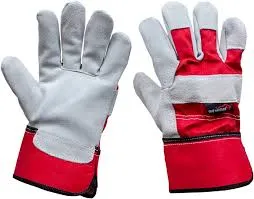Essential Safety Apparel for Auto Racing Drivers and Enthusiasts
The Importance of Safety Clothing in Auto Racing
Auto racing is one of the most thrilling and dangerous sports in the world. The high speeds, combined with the presence of fire, high-impact crashes, and other unforeseen hazards, make it imperative for drivers and their teams to prioritize safety. One of the key components of ensuring safety on the racetrack is the use of specialized safety clothing.
Understanding Auto Racing Safety Clothing
Auto racing safety clothing is designed to protect racers from various dangers they may encounter during an event. This specialized clothing encompasses several critical items, including fire-resistant suits, helmets, gloves, and footwear. Each piece is engineered with specific materials and technologies aimed at minimizing risks and enhancing overall safety.
Fire-Resistant Suits
The most recognizable piece of safety clothing is the fire-resistant racing suit. Made from advanced materials like Nomex or Kevlar, these suits provide an essential barrier against the intense heat and flames that can erupt in the event of a crash or vehicle malfunction. The suits are tested to withstand high temperatures and are designed to be lightweight and breathable, ensuring that drivers can maintain comfort and mobility while still being protected.
The effectiveness of a racing suit in fire resistance is often measured by its FIA (Fédération Internationale de l'Automobile) rating, with higher ratings indicating better protection. Drivers are required to wear suits that meet specific standards mandated by the governing bodies of the sport, ensuring that uniform safety measures are upheld across the racing community.
Helmets
A helmet is arguably the most critical piece of safety equipment for any racer. Modern racing helmets are designed to absorb impact and protect the head in the event of a collision. They are constructed using advanced materials that can withstand significant forces and temperatures. Additionally, helmets are equipped with a fire-retardant interior and a secure chin strap, providing stability during high-speed maneuvers.
auto racing safety clothing product

Moreover, helmets often incorporate communication systems that allow drivers to stay in touch with their team, enhancing coordination and response times during races. The use of helmets that meet the Snell or FIA standards is not just a recommendation; it is an essential requirement in all professional racing environments.
Gloves and Footwear
Gloves and footwear also play a crucial role in ensuring the safety of a driver. Racing gloves are designed to provide grip and control, featuring heat-resistant materials to protect against burns or abrasions. The fingers are often strategically padded and reinforced to ensure dexterity and tactile sensitivity, allowing drivers to operate controls effectively while maintaining their grip.
Similarly, racing shoes are specially designed for foot protection and performance. They are made from lightweight, fire-retardant materials and feature slip-resistant soles. This combination ensures that a driver has a secure footing on the pedals while effectively shielding their feet from potential hazards.
The Role of Safety Clothing in Preventing Injuries
The use of safety clothing in auto racing is not just a regulatory requirement; it can be a lifesaver. In the high-pressure environment of a race, wearing proper protective clothing significantly reduces the severity of injuries sustained during an incident. Advances in technology and material science continue to improve the safety features of racing gear, enabling drivers to perform at their best without compromising their safety.
Conclusion
In conclusion, the importance of safety clothing in auto racing cannot be overstated. The combination of fire-resistant suits, helmets, gloves, and footwear serves as a crucial line of defense for drivers facing one of the most dangerous sports. As technology continues to evolve, so too will the standards and effectiveness of these safety garments. Ultimately, prioritizing safety clothing in auto racing is a commitment not only to the well-being of drivers but also to the integrity and longevity of the sport itself.
-
CE Certified Workwear | Durable Safety Clothing
NewsAug.04,2025
-
Women's Safety Clothing Canada | AI-Enhanced Workwear
NewsAug.03,2025
-
Top Safety Clothing with AI-Driven Protection
NewsAug.02,2025
-
Top HDPE Safety Helmets - Lightweight, Durable Head Protection
NewsAug.01,2025
-
CE Working Clothing for Construction & Welding Safety
NewsJul.30,2025
-
Premium Safety Helmet with Visor for Construction & Industrial Use
NewsJul.29,2025
